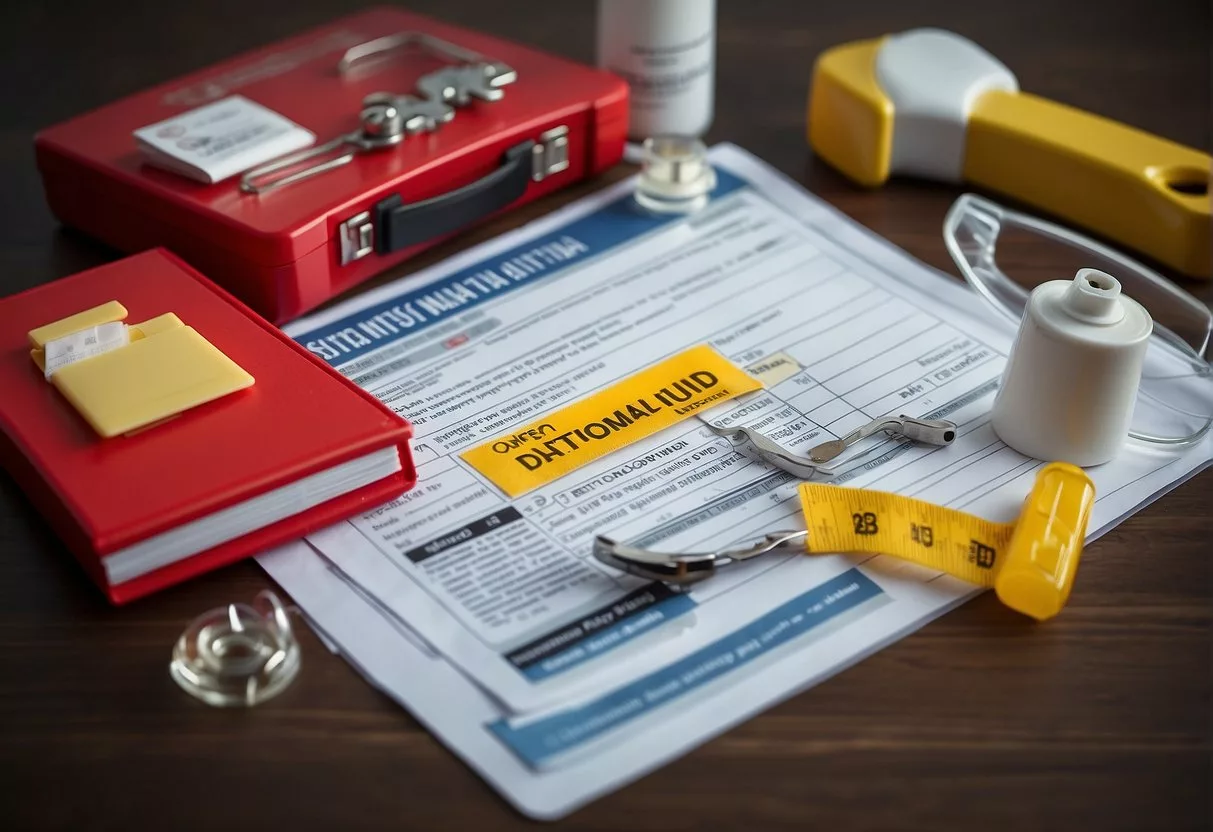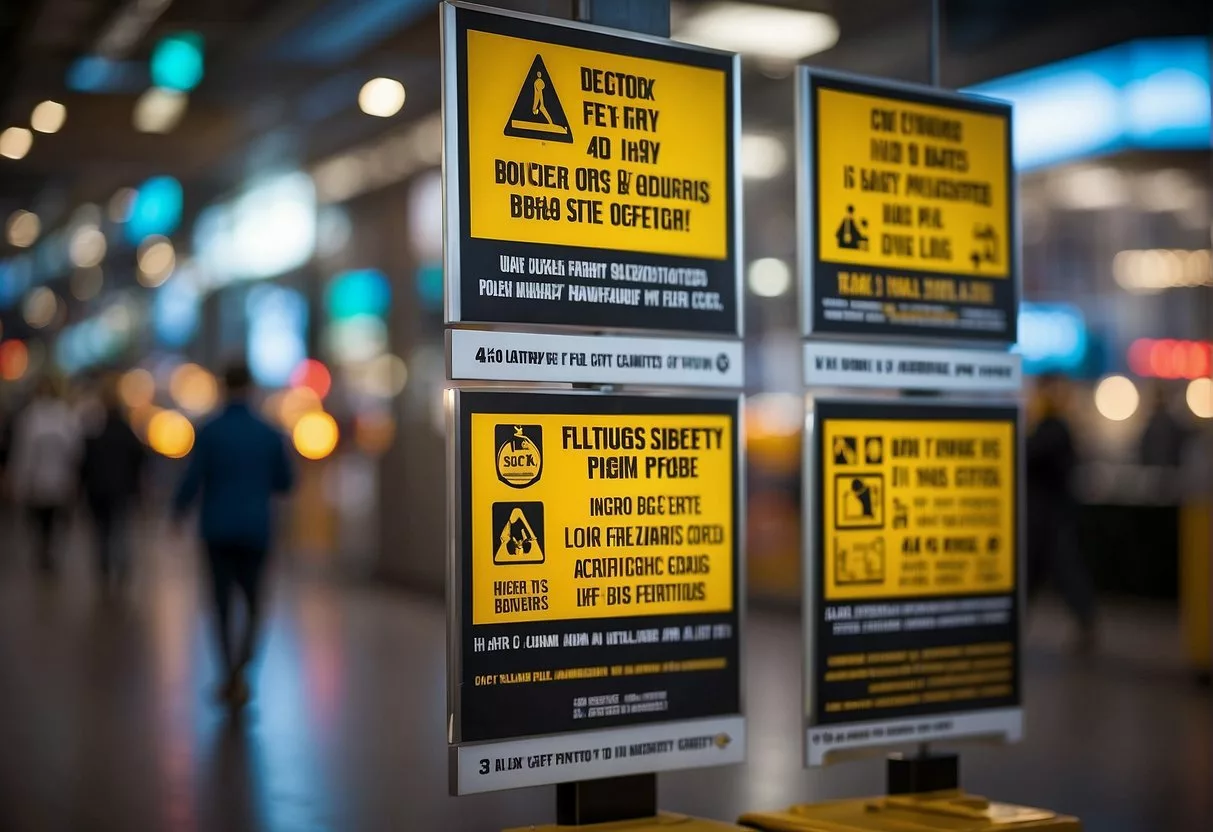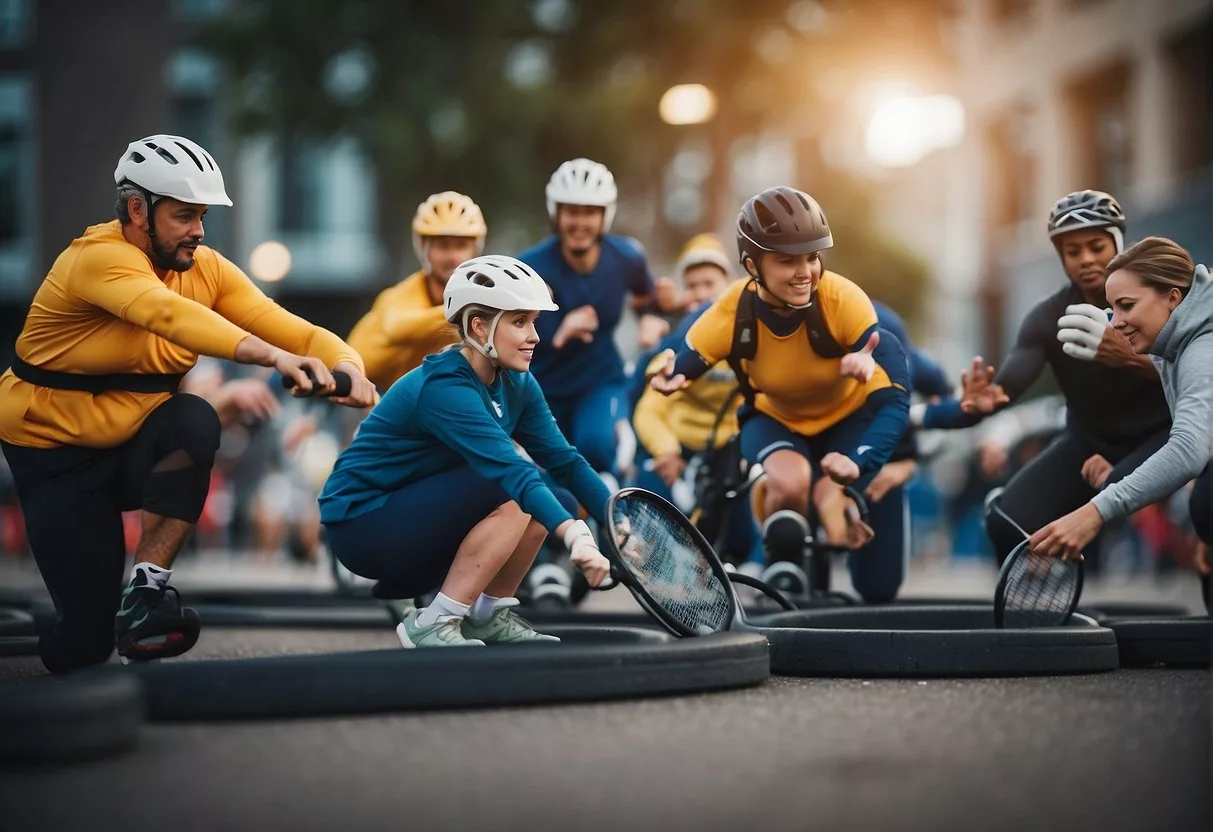Injury prevention is an essential public health strategy aimed at safeguarding individuals from unnecessary harm and improving the overall well-being of communities. By analyzing patterns and causes of injuries, researchers and healthcare providers develop guidelines and interventions to reduce the incidence and severity of both unintentional and intentional injuries.
This process encompasses a wide range of activities, from educational programs about safe practices to the enforcement of policies that mitigate risks in various environments.

One of the critical elements in preventing injuries is understanding the common types and causes, which include everything from road traffic accidents and workplace hazards to sports-related injuries and violence.
Prevention strategies are then tailored to these specifics, utilizing a combination of education, environmental changes, technological innovation, and legislation. In the context of healthcare, providers play a pivotal role in both the treatment of injuries and the education of patients about ways to avoid future harm.
Key Takeaways
- Injury prevention is driven by research into patterns and causes of harm.
- Strategies are tailored to specific types of injuries and their prevalent causes.
- Healthcare providers are integral to treating and educating on injury prevention.
Understanding Injury Prevention

Injury prevention encompasses strategies and methods to reduce the risk of injuries before they occur. These strategies may be applied across various environments and populations, with the goal of safeguarding the well-being of individuals and communities.
Fundamentals of Injury Mechanisms
Understanding the mechanisms of injury is crucial for identifying potential risks and implementing effective preventative measures. Injury mechanisms can be physical, such as the forces involved in a car crash, or they can stem from social factors, such as unsafe neighborhoods lacking proper infrastructure.
They can initiate from a range of incidents including falls, collisions, or even acts of violence. By analyzing how injuries occur, one can tailor prevention strategies to be more effective.
Role of Public Health in Injury Prevention
The field of public health plays a pivotal role in injury prevention. This is achieved by promoting research, policy-making, and community-based interventions.
Organizations like the Centers for Disease Control and Prevention focus on how injury and violence impact society and how to mitigate these issues. Efforts include surveillance of injury patterns, education to disseminate safety practices, and the development of regulatory policies aimed at injury prevention on a larger scale.
Importance of Safe Communities
Safe communities are foundational to reducing injuries and enhancing quality of life. They invest in infrastructure that minimizes harm, such as pedestrian-friendly streets or play areas that reduce the likelihood of childhood injuries.
Furthermore, they foster education and awareness programs that empower citizens to take proactive measures to prevent injuries within their surroundings. Through local policy changes and community engagement, injury rates can be significantly diminished.
Types of Injuries and Common Causes
Injury prevention requires an understanding of the various types of injuries and their common causes. Whether incurred during sports, at work, or at home, knowledge of these injuries is crucial for effective prevention strategies.

Sports-Related Injuries
Sports activities often result in injuries due to the intense physical demands placed on the body.
Sprains and strains are common, with sprains involving the overstretching or tearing of ligaments, and strains affecting muscles or tendons.
Fractures, breaks in the bone, can occur from acute impacts or stress over time. Overuse injuries, like tendinitis, develop gradually and result from repetitive motion. According to the Cleveland Clinic, these injuries can often be treated with rest, ice, compression, and elevation, but more severe cases may require medical intervention.
Additionally, sudden, forceful impacts can lead to concussions, a type of traumatic brain injury.
Work-Related Injuries
Work-related injuries can range from acute incidents to chronic issues stemming from repetitive tasks.
Overuse injuries such as carpal tunnel syndrome are prominent among individuals who engage in repetitive hand movements.
Heavy lifting and improper ergonomics can result in back strains and sprains, while falls or sudden forces can cause dislocations and fractures.
It’s essential for employers to ensure that work environments adhere to safety standards to minimize these risks.
Domestic and Recreational Injuries
Injuries in the home or during recreational activities are often due to falls, lack of proper safety equipment, and improper use of tools.
Orthopedic injuries such as sprains, strains, and dislocations frequently occur during do-it-yourself projects or leisure activities.
Kitchen accidents can lead to cuts and burns, while slip and falls may result in fractures.
Regular exercise, maintaining a safe living environment, and using appropriate gear can help prevent such injuries.
Prevention Strategies and Best Practices

Injury prevention is crucial in maintaining a safe and productive environment, whether it’s at work or during physical activity.
Implementation of targeted training programs, the use of adequate protective gear, and emphasis on fitness and conditioning stand at the forefront of mitigating risks and enhancing performance.
Importance of Education and Training
Education and training form the foundation of injury prevention. They equip individuals with the knowledge required to identify potential hazards and execute tasks safely.
An effective strategy involves regular safety training sessions which can dramatically reduce the occurrence of workplace injuries. Employees who understand the dynamics of injury prevention are more likely to apply safety protocols diligently.
Safety Equipment and Protective Gear
The importance of safety equipment and protective gear cannot be overstated.
Appropriate gear, tailored to the specific hazards of an activity, is essential for protecting against injury.
For instance, in industries where physical hazards are present, personal protective equipment such as helmets and safety goggles are imperative.
It is the responsibility of management to ensure that such equipment is not only available but also maintained to the highest standards.
Role of Fitness and Conditioning
Fitness and conditioning play a pivotal role in injury prevention.
A well-designed fitness program increases overall strength and endurance, thereby improving performance and reducing the likelihood of injury due to fatigue or overexertion.
Regular conditioning and exercises tailored to specific job functions or sports can prime the body to withstand the rigors of physical activity and prevent accidents associated with a lack of preparation.
Preventing Specific Injuries

Injury prevention tactics are targeted and systematic approaches designed to avoid various physical harms. This section provides specific methods to help safeguard against common injuries such as sprains, strains, concussions, fractures, and dislocations.
Preventing Sprains and Strains
Sprains and strains, often occurring during physical activities, can be mitigated through preparation and correct technique.
Warm-up exercises that include at least 5-10 minutes of gentle cardiovascular activities improve blood flow to muscles, making them less prone to injury. Incorporating sport-specific movements into warm-up routines enhances muscle readiness for the demands of the sport or activity.
To further prevent strains and sprains, one should engage in regular strength training and flexibility exercises, as they fortify the muscles and tendons, making them more resilient to overextension or tearing.
Reducing Risks of Concussions
Concussions are serious injuries resulting from impacts to the head.
Wearing properly fitting helmets in sports like football, cycling, or skiing is paramount in reducing the risk of a concussion.
Education on safe playing techniques, especially in contact sports, and adherence to rules that limit high-risk activities can also significantly decrease the likelihood of concussive injuries.
Additionally, establishing concussion protocols and training for coaches and players to recognize and appropriately respond to potential concussions is essential in enhancing safety.
Strategies Against Fractures and Dislocations
Fractures and dislocations are often caused by falls or direct impacts.
Using protective gear such as wrist guards or pads can reduce the risk of these injuries by up to 83% in activities like snowboarding.
In work environments or during activities at height, employing safety harnesses and maintaining clearly marked hazard areas are critical preventive measures.
Educating individuals on proper lifting techniques and encouraging the use of assistive devices when handling heavy objects can also help in preventing fractures and dislocations due to undue stress on bones and joints.
Role of Healthcare Providers

Healthcare providers are pivotal in injury prevention, playing multifaceted roles from immediate care to ongoing rehabilitation. They support patients throughout the injury management process and ensure adherence to professional guidelines.
First Response to Injuries
Healthcare providers serve as the initial point of contact following an injury. They assess the situation, often under time-sensitive conditions, and apply the necessary first aid or emergency care.
This assistance ranges from basic wound care to stabilizing a patient during transport to a medical facility. The quality of first response can significantly affect patient outcomes.
Guidelines for Healthcare Professionals
Healthcare professionals must abide by established clinical guidelines to effectively reduce the risk of injury and ensure optimal care.
These guidelines inform practitioners on evidence-based practices, such as how to properly disinfect wounds to prevent infections or when to utilize certain diagnostic tools to assess injury severity.
Adherence to these protocols helps maintain a standard of care and minimizes treatment discrepancies.
Injury Rehabilitation and Management
Post-injury, healthcare providers facilitate rehabilitation and management, tailoring support based on individual needs.
They may lead patients through physical therapy exercises or coordinate with specialists to address more complex rehabilitation requirements. Healthcare practitioners’ continuous support and expertise during this phase are crucial for patients’ recovery and return to normal function.
Policy and Advocacy in Injury Prevention

Policy formation and advocacy play crucial roles in injury prevention. They align the objectives of various organizations towards mitigating the incidence of injuries and violence. Whether through legislating safety standards or fostering community programs, these efforts are fundamental in shaping a safer society.
Governmental and Non-Governmental Roles
Governmental entities, like the Centers for Disease Control and Prevention (CDC), are central in defining and implementing injury prevention policies. They provide not only guidelines and funding but also conduct crucial research to inform evidence-based strategies. On the other hand, non-governmental organizations (NGOs) often advocate for policy change, raise public awareness, and pilot injury prevention programs. This synergy between public institutions and NGOs is vital for a coherent injury prevention framework.
Creating Supportive Legislation
Ensuring the enactment of supportive legislation is a cornerstone of injury and violence prevention. Successful policies often begin as state-level initiatives, addressing specific community needs before scaling to a national level in the United States. Legislative acts, such as setting a legal blood alcohol limit for drivers or mandating the use of car seats for children, are examples of concrete actions taken to prevent injuries before they occur. Advocacy groups work tirelessly to support and propel such legislation, emphasizing its necessity for public health and safety.
Community-Based Approaches
Community-based strategies are powerful tools in the overall injury prevention arsenal. Tailored to local needs, these approaches foster environments where safety is a collective priority.
Initiatives may include community education programs, coalition-building around violence prevention, or state-supported safety improvements in high-risk areas. By involving local stakeholders, these programs not only empower communities but also encourage a culture of prevention that aligns with broader policies.
Injury Prevention Resources

Injury prevention is a vital area of public health involving various resources that assist individuals and communities to minimize the risk of harm. These tools and programs support understanding, research, and practical applications to keep populations safe from preventable injuries.
Educational Materials and References
Educational materials and references are crucial for spreading awareness and information about injury prevention.
The Centers for Disease Control and Prevention (CDC) provides a comprehensive collection of data and guidelines that individuals and health care providers can use to understand the impact of injuries and ways to prevent them.
These materials cover a range of topics from overdose and suicide prevention to motor vehicle safety.
Training and Support Programs
Training and support are key aspects of injury prevention that can enhance the competency and readiness of professionals and community members.
The CDC offers interactive online training series that integrate recommendations for clinical settings with practical scenarios.
These training modules include videos, knowledge checks, and tips that help providers apply best practices in real-world situations.
Research and Statistics Resources
Access to accurate research and statistics is essential for making informed decisions about injury prevention policies and programs.
Organizations like Health.gov supply databases of evidence-based resources (EBRs) which detail science-based methods for enhancing health and preventing injuries.
Additionally, the Kentucky Injury Prevention and Research Center (KIPRC) functions as a platform for injury prevention research and a source of statistics to inform policy and program development.
Understanding and Addressing Violence

Violence is a significant problem affecting individuals across all stages of life. It has profound effects on public health, necessitating prevention strategies and support mechanisms for those impacted.
Violence as a Public Health Issue
Violence reaches beyond just the physical harm inflicted; it has extensive mental and economic ramifications, affecting communities and society at large. The Centers for Disease Control and Prevention (CDC) acknowledges violence as a public health crisis that requires systematic approaches similar to those used in combating diseases.
Strategies for Violence Prevention
Prevention strategies are grounded in evidence-based practice and take a multi-faceted approach.
The CDC outlines fundamental steps such as defining the problem through data from a variety of sources including medical records and hospital reports (Violence Prevention Fundamentals).
Once the problem is defined, community-specific interventions can be developed. These interventions often include:
- Education: Raising awareness about the signs and consequences of violence.
- Legislation: Advocating for policies that protect individuals from violence.
- Community Programs: Engaging local organizations to provide supportive environments.
Support for Victims of Violence
Victims of violence require comprehensive support to address the physical, psychological, and social challenges that arise from their experiences.
Programs designed by entities like the Division of Violence Prevention (DVP) within CDC’s Injury Center show how support can be integral in the recovery process and in preventing further victimization.
Support mechanisms include:
- Counseling Services: To help victims cope with the psychological aftermath.
- Medical Care: Addressing immediate and long-term physical injuries.
- Social Networks: Building communities that provide support and reduce isolation.
Global Perspectives on Injury Prevention

Injury prevention has become a priority on the global health agenda, recognizing the need to address the complexity of risks faced by diverse populations worldwide.
Injury Prevention in Diverse Populations
In diverse populations, the factors contributing to injuries can vary widely, from socioeconomic conditions to cultural practices.
For instance, in areas with limited healthcare access, injury prevention strategies must account for immediate post-injury care. Studies show that in Australia, the approach towards injury prevention has been adapted to cater to both urban and remote communities, taking into consideration the unique settings and challenges of each area.
International Collaboration and Support
Effective injury prevention programs often result from international collaboration and support.
Organizations such as the World Health Organization (WHO) facilitate knowledge exchange and provide guidelines to help countries establish and enhance their injury prevention initiatives.
International conferences and working groups are instrumental in forming partnerships that strengthen global prevention efforts.
A clear example of this support system was WHO’s first global meeting of ministry of health focal points for injury and violence prevention, which was pivotal in improving international cooperation in this field.
Case Studies from Around the World
Case studies from different countries provide valuable insights into the effectiveness of various injury prevention strategies.
For example, a global review of traffic-related injury prevention measures can reveal the impact of legislation, such as mandatory seatbelt usage and speed control enforcement, on reducing fatalities.
These case studies are crucial for understanding the nuances of injury prevention and for guiding future policies and programs.
Frequently Asked Questions

This section addresses common inquiries about injury prevention, providing evidence-based strategies and practical advice.
What are the most effective injury prevention strategies in sports?
In sports, effective injury prevention strategies include proper conditioning, appropriate use of protective equipment, and adherence to safety protocols.
For instance, using shin guards in soccer is an essential strategy to prevent leg injuries.
Can you list some practical examples of injury prevention?
Practical examples of injury prevention encompass the RICE method—Rest, Ice, Compression, and Elevation—for minor sports injuries, and systematic training programs like those offered by the Injury Prevention Project, which cost significantly less than traditional therapy sessions.
What exercises are recommended to help prevent injuries?
Exercises that include stretching and strength training are recommended to improve flexibility and muscular balance, thereby reducing the risk of injuries.
Dynamic warm-up routines before physical activity are also pivotal in preparing the body for the stress of sports.
Which safety measures are crucial for injury prevention in the workplace?
In the workplace, safety measures like eliminating hazards, implementing ergonomic principles, and encouraging regular breaks to prevent overexertion are crucial.
The Total Worker Health approach integrates safety from work-related hazards with health promotion.
What are the key steps in a comprehensive injury prevention program?
A comprehensive injury prevention program involves assessing risk factors, providing education on safe practices, consistently enforcing safety rules, and evaluating program effectiveness regularly to ensure ongoing improvement.
What should be included in an injury prevention plan for physical activities?
An injury prevention plan for physical activities should include sport-specific conditioning. It should also include proper technique instruction and strategies for dealing with environmental factors like playing surfaces.
Regular assessment of the equipment for wear and tear is important. It is also important to ensure sufficient rest periods to prevent overuse injuries.